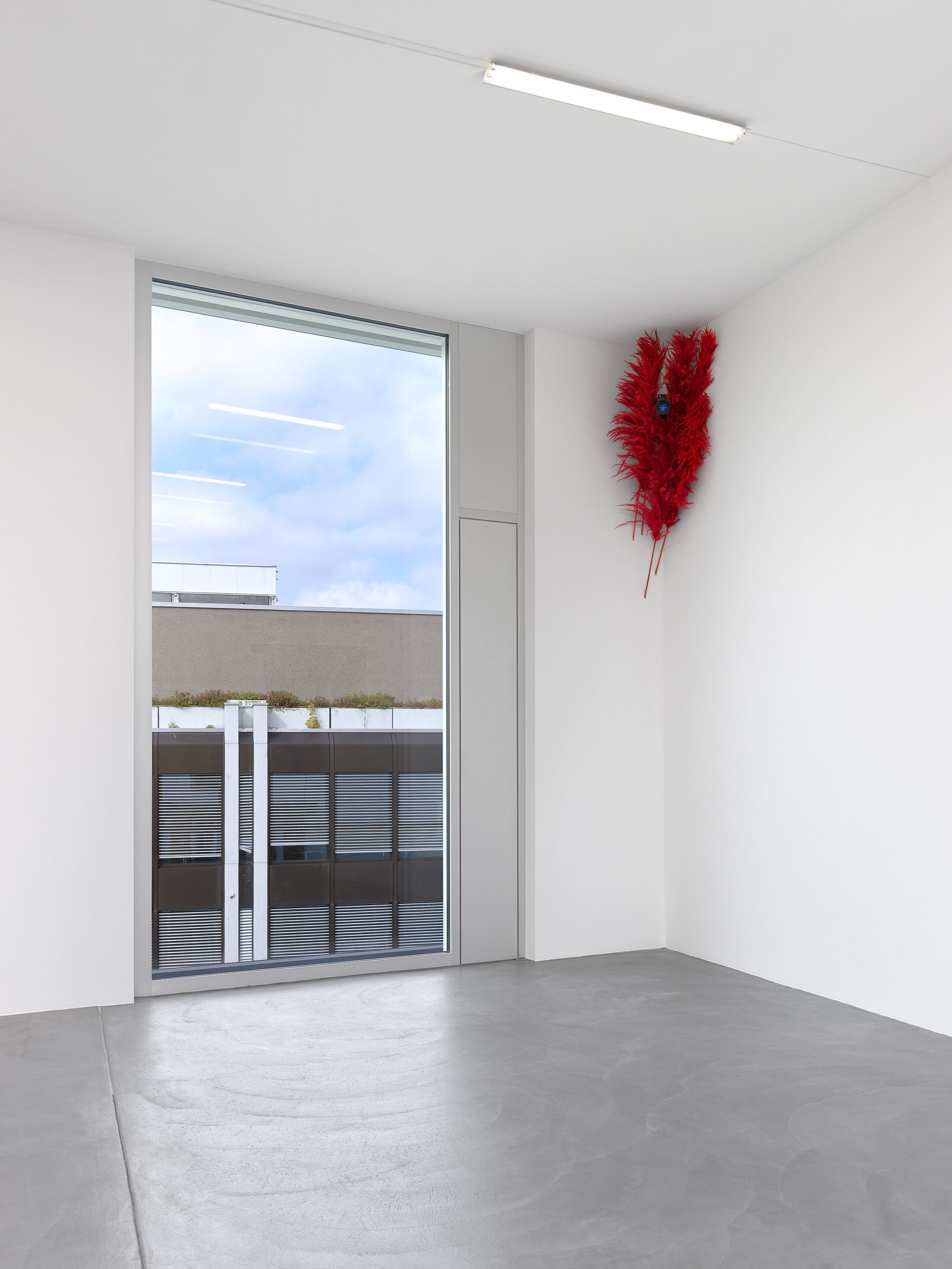YYYYMMDD >>> BACK HOME <<< >>> SELECTED FEATURES <<< >>> HIDDEN ARCHIVE <<<
[20221031]
MAXIMUM SECURITY SOCIETY by JULIA SCHER at KUNSTHALLE ZÜRICH [from 20221008 to 20230115]
[Photos: Annik Wetter]















Julia Scher (b. 1954 in Hollywood, CA, lives in Cologne) has traced the gradual emergence of a ‘maximum security society’ since the 1980s. This is how sociologist Gary T. Marx describes the current era of encompassing surveillance technologies and infrastructures: ‘Many of the kinds of surveillance once found only in high security military and prison settings are seeping into the society at large. Are we moving toward becoming a maximum security society where ever more of our behavior is known and subject to control?’ Scher’s first institutional survey brings together a selection of works from the last 30 years: multimedia installations, video works, sculptures and print and internet projects (see also here).
The central installation, Predictive Engineering (1993-present), a new production for the Kunsthalle Zürich exhibition, plays with the impression that visitors are being checked over for suspicious appearances or behaviour. The mix of real and staged video footage (so-called Fake Feeds) leaves it unclear what form of protection (or threat) one should anticipate. The pseudo-brand ‘Security by Julia’ under which Scher has operated since the late 1980s indicates the commercial interests that are behind much surveillance infrastructure.
A sales catalogue from 1991 offers fictitious services and products such as ‘random public evaluations’ and ‘behavior and productivity deviance detectors’, while Scher has produced underwear, condoms and – more recently – hand sanitiser dispensers with the brand. Maximum Security Society furthermore brings together the three ‘embedded’ beds Mama Bed, Papa Bed and Baby Bed (all 2003), which, equipped with cameras and monitors, make it evident how observation and communication (or, today, ‘sharing’) have permeated into the most intimate corners of our lives. The constellation of Mama/Papa/Baby also refers to another form of surveillance, that of the nuclear family and the normative constructions that are, we know, particularly evident in intimacy and sexuality – and can violently dominate there. In concert with these, the 1988 film Discipline Masters is a four-hour, confessional soliloquy in which the artist attempts ‘to preserve her understanding of [her] life history’.
While Scher is known for her surveillance installations that address psycho-social dynamics and perversions, the formal, sculptural quality of her work is often overlooked. It is precisely this that the exhibition Maximum Security Society at Kunsthalle Zürich also aims to highlight, whether in works such as Girl Dog Hybrid (2005), Hidden Camera (Architectural Vagina) (1991-2018) or Surveillance Area (1994).
With warm thanks to Magnus Schaefer. We equally wish to thank those who have lent works to the exhibition including Esther Schipper (Berlin), Galerie DREI (Cologne), Kunstverein Düsseldorf, Mamco (Geneva), SFMOMA San Francisco Museum of Modern Art and Galleria MASSIMODECARLO, as well as Moritz Englebert and Damian Weber. The artist and Kunsthalle Zürich wish also to thank Otto Bonnen, Tereza Glazova, Eugène Kaïmanovitch, Claire Megumi Masset, Oz Oderbolz and Leevi Toija for their contribution to Predictive Engineering (1993-2022).
The exhibition text includes excerpts from an interview between Daniel Baumann and Julia Scher. The full text can be read here.
[Text: Kunsthalle Zürich]
©YYYYMMDD All content and design by Daniela Grabosch + Ricardo Almeida Roque unless otherwise stated. Images, Videos and Texts can only be used under permission of the author(s).